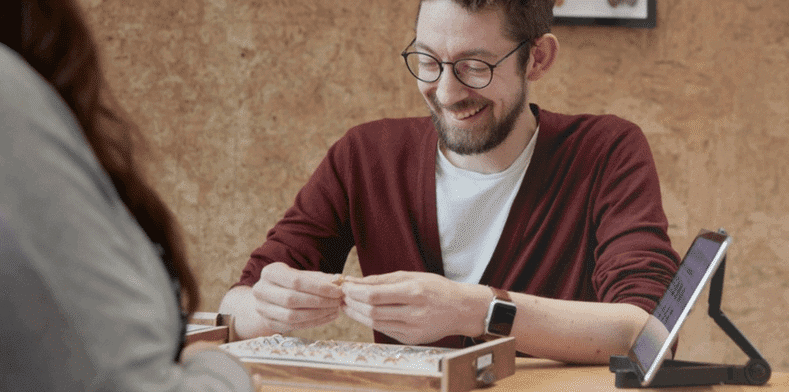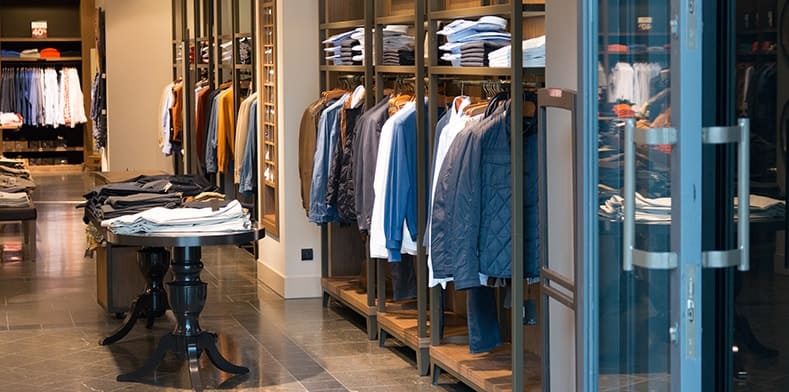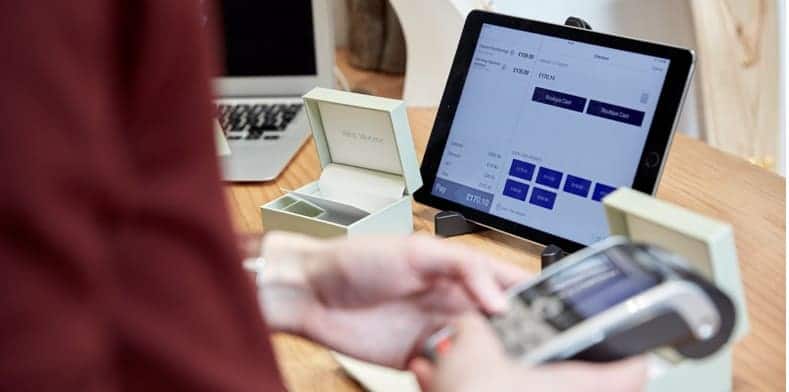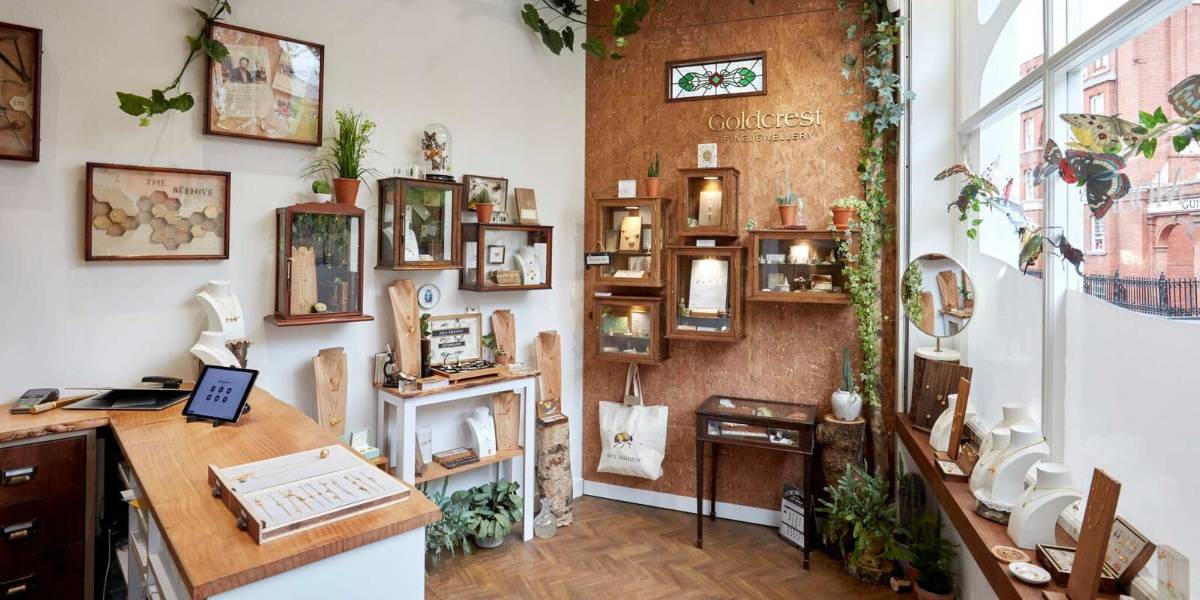Most companies don’t set out to disregard their customers and fail at serving their needs. It can happen gradually over time as their organization focuses on profits, on growing revenue, on quarterly earnings reports and staying ahead of their competition by any means possible.
Sometimes those “means” can put a company and its executives in hot water with their customers and the government, costing them billions. Or a social media video of a customer being dragged off a plane goes viral, and the story gets worse when the CEO doesn’t hold his company accountable.
Granted, these are extreme examples, but the smallest of mistakes, when duplicated with hundreds or thousands of customers can have an extreme effect on any business.
In retail, every day our industry gets more and more competitive in every way possible, and there’s no turning back. The time is now for establishing a strong customer-first strategy and weaving it deeply into your company’s operational and cultural DNA.
We’ll take a look at the move towards consumer “surprise and delight”, how this is changing not only retail, but other consumer-facing markets, the trends towards customer-centric frameworks, and how one of our Brightpearl retailers makes a fan of their handmade jewelry, one at a time.
Discover our top tips for providing world-class customer service.
How Having a True Customer Obsession Leads to Surprise and Delight
Many eyes have been on Amazon and the company’s continued pace of expansion into many market sectors. It’s important to note key factors that have led to their dominance. And who better to explain this than the CEO and founder, Jeff Bezos, in his letter to shareholders last year:
“There are many advantages to a customer-centric approach, but here’s the big one: customers are always beautifully, wonderfully dissatisfied, even when they report being happy and business is great. Even when they don’t yet know it, customers want something better, and your desire to delight customers will drive you to invent on their behalf. No customer ever asked Amazon to create the Prime membership program, but it sure turns out they wanted it, and I could give you many such examples.”
How Amazon keeps their customer-centric core in place is what Bezos terms as staying in “Day 1”. It’s a figurative and literal ethos. The name of the building from which Bezos works, and the customer-first mindset and methodology is the same. He believes that when a company becomes “Day 2” that leads to, “…stasis. Followed by irrelevance. Followed by excruciating, painful decline. Followed by death. And that is why it is always Day 1.”
If you think about the power behind this ethos, the aspect of invention on the behalf of customers and delivering services they never thought of but love, has led to the creation of an entirely new business model: the 21st century’s sharing economy.
Think about it.
The retail space is now more competitive than ever before. If you’re ever going to compete with the likes of Amazon and other big box retailers, you’re going to need to think outside of the box.
Free and fast delivery is no longer enough for you to differentiate from your competitors, although it’s definitely a good starting point. Innovative products, a rock-solid marketing strategy and powerful back office software will now be your go-to tools in order to prosper and grow.
And if we also consider real life business examples outside of retail, we’ll see this is best practice across many industries.
Getting a taxi, especially in the U.S., for instance, was not always a great user experience. The industry’s “Day 2” irrelevance sparked an idea for something better, and when given a new choice they never expected, consumers hopped in.
Uber, Lyft, and other similar ride sharing businesses delivered a fast, convenient, reliable (for the most part), and less expensive way to get around town. Now the pressure is on these companies to stay in “Day 1”, keeping their customer-first processes evolving and coming up with new ways to deliver the unexpected.
Hotels, under pressure from the multi-billion dollar operation that is Airbnb, have to continually invent new ways to enhance their hospitality business.
One example is Hilton, which has developed a creative way to tap into guests’ passion for music by launching their Music Happens Here series, “which looks into some of the most iconic places around the world where music has been created, performed, and celebrated.” A series campaign that is directly aimed at the type of traveler to use Airbnb. It provides Hilton Honors members with access to exclusive meet-and-greets and VIP concert experiences from Los Angeles to London, featuring chart-topping artists while injecting the aspect of traveling to musical destinations.
There is also a new type of hotel emerging, a micro boutique hotel, that’s a mix of a large, upscale house offering hotel-like amenities but without the front desk or hotel staff. Using Airbnb as their reservation portal enables easy and free marketing, and guests have a mix of both home and hotel.
When Airbnb was first getting started, the company’s founder, Brian Chesky, gave up his home and spent nearly a year living from one Airbnb property to another as the company grew its base of hosts. This became a key component to understand how best to design the service with the customer in mind.
Putting yourself in the shoes of your customer is not a new notion, but when was the last time the CEO of a major airline flew coach incognito in a middle seat from San Francisco to New York, or Buffalo to Portland? Would that executive think differently about how their planes are designed or how their service rates after such an experience?
Communicating with your customers is always essential, but as Bezos stated, that won’t guarantee you’ll have all the facts. Having a true customer obsession means going through your business’ customer journeys yourself and empowering your empathy channel. This will enable you to discover new ways to surprise and delight, to turn one-time customers into returning fans.
The Retail Revolution Will Be Digital – Improving CX
Customer Experience (CX) has evolved into a CEO-level initiative across industries, but especially in retail. Although price is often a decision-making factor, that’s not always the case. How the customer was treated through their buying journey, if they’re able to get the product they need when they need it, the convenience of being where the customer is buying, and returns and shipping policies all factor into whether a consumer returns to that retailer, or buys from the competitor with a click on their mobile device.
It’s again about identifying pain points and then providing relief and glee.
In an interview with Inc., Patrick Gauthier, VP, Amazon Payments, positioned Amazon as a tech company that happens to be in retail. Back in the day, they saw a major problem in ecommerce and set out to fix it. “We didn’t start out by looking for a competitive advantage, but rather we looked for what is annoying to customers. We saw that the uncertainty of when your orders would arrive was annoying to customers so we built out our logistics channel and ultimately began to offer that channel to merchants through Fulfillment by Amazon. We answered the important question, ‘Where’s my stuff?’ and made fulfillment predictable.”
This is also the main core of why Brightpearl exists: to take the uncertainty out of retail for both the merchant and the consumer.
Before implementing Brightpearl, many of our customers were running their retail businesses on a series of spreadsheets, all of which require manual processing, making order shipment predictions, inventory tracking, and customer service more complicated, time consuming, and costly.
Embracing the digital revolution through a retail management platform enables predictable fulfillment and automation of shipment status to the customer, so they always know where their stuff is and when they’ll get it.
When we look at how we deliver quality CX for our retailers, enabling the support of marketplaces like Amazon was a key component in delivering what retailers want and need. If they choose to diversify into the Amazon marketplace, those sales and inventory adjustments are processed and updated in real-time back to their Brightpearl back office.
Staying one step ahead of consumers’ buying behaviors plays a large role in evolving our own technology, to in turn, enable our retailers to operate in an omnichannel world. To be selling where shoppers are buying and provide all the conveniences omnichannel delivers and that consumers have come to expect.
By being able to automate those back office processes they previously performed manually and on spreadsheets, a merchant’s focus can be on their front office, on their customers and employees, on marketing, and on introducing new products and services.
The Balance of Digital and Personal for Optimum CX – Alex Monroe
At Gartner’s Customer Experience & Technologies Summit in London last May, they presented a four-step process for building a successful CX Vision:
- Build an emotional connection
- Deliver customer value that sets you apart
- Make it simple, intuitive, and easy to understand
- Show commitment by setting employee and customer expectations
Alex Monroe, the maker of handcrafted, uniquely designed jewelry can easily check off all those CX Vision boxes.
Since 1986, the Alex Monroe company has been led by its founder of the same name, in creating bespoke, highly unique, and whimsical jewelry inspired by nature and with a very British sense of style. In those thirty-plus years, customers have ranged from Princess Anne and Buckingham Palace, to the movie elite like Emma Watson and Sienna Miller.
In the company’s YouTube series, Monroe Mumbles, the emotional connection is presented as Alex Monroe himself takes the viewer through his process of creating a new line of jewelry for the likes of Buckingham Palace; from his sketches and pictures, to his time back at the studio where the concepts become true works of art to be worn.
That emotional aspect of their brand is carried through in physical form at their flagship boutique located near London Bridge, uniquely designed for creating curiosity. Taking a different approach to a retail store, the space portrays Monroe’s signature style through the display of natural elements and greenery, as if designed by Mother Nature herself. “We’ve got jewelry hidden in antique wooden cabinets rather than glass counters,” said Tom Graham, Ecommerce Manager for Alex Monroe. “Wherever you look, there’s something fun and quirky to see.”
While Graham considers keeping up with the continual evolution of technology to be one of his biggest challenges, in his role, integrating a cloud-based retail platform into the company’s operations has enabled Alex Monroe to continue to grow substantially. Today the retailer sells on three different channels (wholesale, online, in-store), has tripled their staff, and has expanded internationally with reach into 38 different countries around the world, from the U.S. and Japan, to Iceland and South Korea.
While the company’s business and operation have blossomed, their ability to deliver personal service continues to bloom.
“We’re using the Brightpearl POS on the tablet,” he explained. “What it means is that when we’re with a customer in our store, our sales team are fully focused on that customer; talking to them, sharing the jewelry, letting them explore, which is great. Because that means that there’s a real conversation happening rather than a one-sided approach.”
To extend the creative process into the jewelry retailer’s shopping experience, Alex Monroe’s workshop is on-site at their boutique, where they not only make their signature pieces come to life but also give specific design advice when customers are visiting.
“The level of customer service we can offer is higher than it would be elsewhere,” said Graham. “It helps to emphasize and show people that everything is handmade. We’ve got the people who are making it two floors away. It really keeps that message strong.”
According to Forrester data, 77% say that valuing their time is the most important thing a company can do to provide them with good online customer service.
Because each Alex Monroe piece is handmade or made to order, having inventory on hand for same or next day delivery is not often possible. This requires a shift in customer expectations with a personal touch: “It’s all about communication,” stated Graham, “being able to make it very clear that it’s being made for them so it’s a longer lead time.”
It’s the combination of their automated back office processes that keep the customer informed of their order status, and the personal service they offer with real human beings. That carries the uniqueness of Alex Monroe’s brand through every facet of their operation.
“People can call us and talk to us about needing something. We can keep up with these things and keep up with customer expectations, but we have to approach it in a different way.”
More Surprise and Delight to Come
My title is VP Customer Success at Brightpearl. I’m here to ensure our team is going beyond our customers’ expectations, providing them with true value and helping them to achieve their business goals. Our priority is to be a reliable and informative retail partner in making their business better.
When I first joined the team, one of my first tasks at hand was to spend time with our customer service and technical teams to learn about any pain points that existed and take steps to resolve them. I walked through the customer journey in their shoes and through those of our customer-facing personnel in order to really understand how we can discover potential issues before our customers ever experience them first-hand. Many changes have been made since then and more will be coming soon, along with new services that will hopefully surprise and delight our growing Brightpearl community.
Our customers need to be able to walk in their own customers’ shoes, across every channel. They need to be consistent across those channels. And as our software was built around omnichannel best practices, we strongly believe that Brightpearl is the software that is going to help them to do that.
It goes back to the tried and true adage – when our customers succeed, we succeed.
If you’re interested in finding out more about what we do here at Brightpearl and how we can help you succeed with a customer-first strategy, book a call with one of our business experts today.








